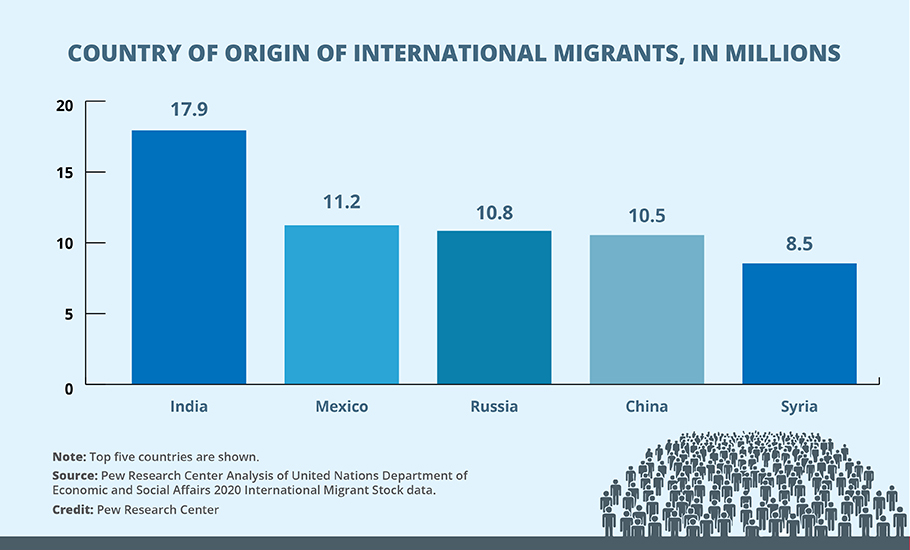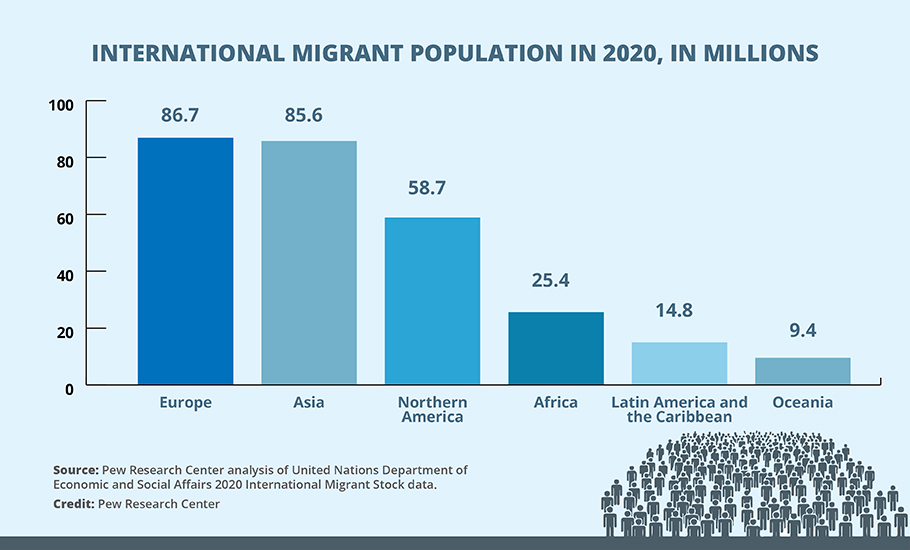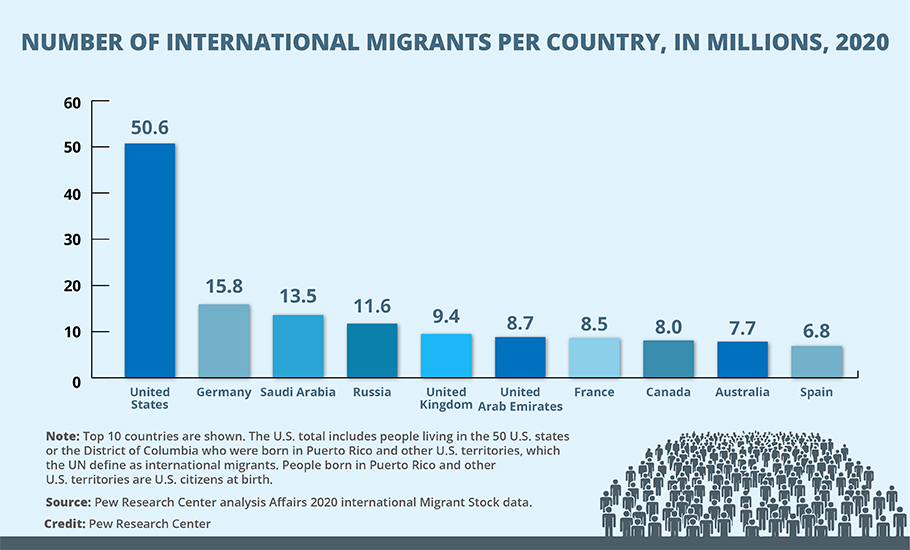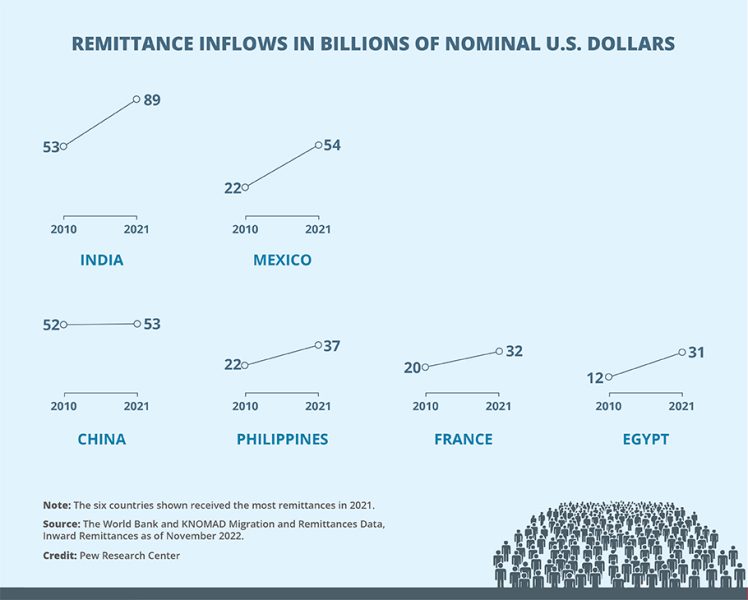
India biggest loser to emigration, but highest earner from it: UN
In 2020, 17.9 million Indians were living in a different country but accounted for only 1.3% of all people born in India by that year; remittances grew from $53 billion in 2010 to $89 billion in 2021

India, which has been a huge source of international migrants for more than a century, remained the top origin country for the world’s migrants in 2020, says the United Nations’ International Organization for Migration (IOM).
In parallel, India has been the top receiver of remittances — the money migrants send to their home countries — in the world since 2010. Between 2010 and 2021, remittances to India grew from $53 billion to $89 billion.

In 2020, 17.9 million of the 281 million international migrants — roughly 6.4% — traced their origin to India. The countries with the largest number of Indian migrants were the United Arab Emirates (3.5 million), the United States of America (2.7 million), and Saudi Arabia (2.5 million), according to a Pew Research report citing UN data.
No dent in national population
However, the massive outmigration hardly makes any ripple in a country that is all set to snatch the “largest population” crown from China this year. India’s 17.9 million migrants in 2020 made up only 1.3% of all people born in the country by that year.
Also read: India top contributor with added 177 m as world population touches 8 b
In comparison, Mexico had lost about 11.2 million people to outmigration by 2020, accounting for 8.2% of all those born in the country by then. Russia accounted for the third-largest number of outmigrants by 2020 — 10.8 million — while the UK’s 4.7 million international migrants accounted for 7.6% of those born in the country by 2020.
Europe and Asia are neck and neck when it comes to the continent with the largest number of international migrants. Europe had around 86.7 million international migrants living there in 2020, while Asia had 85.6 million. According to the IOM, both continents recorded a steadily increasing number of international migrants since 2005.

However, country-wise, the US has more international migrants than any other. With close to 51 million migrants living in the country in 2020, the US has no competition, with Germany coming a distant second with about 15.8 million migrants. Saudi Arabia comes third, with 13.5 million.

Yet, when it comes to the share of population being made up by immigrants, it’s a different story altogether. Despite its massive in-migration, the US has migrants accounting for only about 15.1% of its population.
The overcrowded regions
On the other hand, a whopping 93.9% of all people living in the UAE in 2020 were international migrants. The share was 80.6% in Qatar and 71.3% in Kuwait. The top 10 include other Middle Eastern countries such as Bahrain, Oman, Saudi Arabia, Jordan, and Lebanon.
Latin America and the Caribbean islands seem to be a favourite of migrants these days. The region has the fastest-growing international migrant population. Since 2005, the region’s international migrant population has roughly doubled.
Watch: Indian cities stare at growing population crisis as world population nears 8 billion
Despite their massive migrant population, Europe or Asia do not have migrants accounting for a major share of their population. The region with the largest share of international migrants happened to be Oceania, with 21.4% of all residents in Australia, New Zealand, and the Pacific island nations being international migrants in 2020.
Next came North America, with migrants making up 15.7% of the population. In Europe, migrants accounted for 11.6% of the population. However, if only the Gulf Cooperation Council countries were singled out, migrants accounted for more than half (52.7%) of the resident population, according to the UN data. These nations include Bahrain, Kuwait, Oman, Qatar, Saudi Arabia, and the UAE.
The money that went home

Courtesy the COVID-19 pandemic, remittances went down by about $11 billion from 2019 to 2020. Global remittances, which had been steadily rising since 2010, fell from $722 billion in 2019 to $711 billion in 2020. However, according to the World Bank, remittances reached $781 billion in 2021 and are estimated to reach $794 billion in 2022.
While India was the top receiving country, the US has been the top sending country for remittances since 1990. In 2021, migrants living in the US sent $73 billion in remittances globally.
Also read: Global population hits 8 billion, but per-capita consumption remains main problem
More men than women seem to be migrating, as men comprised 51.9% of the global migrant population, while 48.1% were women. In 2000, 50.6% of migrants were men and 49.4% were women, say UN figures, as 3.6% of people across the world lived outside their country of birth.
More people displaced
With wars, internal conflict, and natural disasters on the rise, the number of displaced people in the world rose to a new high of 89.4 million in 2020 from 84.8 million in 2019, according to the UN’s World Migration Report 2022. Overall, about 1.1% of the world’s population are displaced people.
Most of those displaced — 55 million — were internally displaced in their birth countries because of conflict, violence, or disasters. About 34% of displaced people — 30.5 million — were living outside their country of birth as refugees (26.4 million) or asylum seekers (4.1 million) in 2020.
Most (54.9%) lived within their region of origin in 2020. For example, 69.9% of Europe’s international migrants lived in another European country, reflecting migration out of Eastern European countries such as Russia, Ukraine, Poland, and Romania to Western Europe.
Also read: Rishi Sunak plans restrictions on foreign students to control migration: Report
In contrast, nearly half (48.4%) of African migrants were likely to live outside the strife-torn continent. Migrants from Latin America and the Caribbean — and surprisingly, North America — are least likely to live within their region of origin, with the respective figures being 26.3% and 25.2%.


